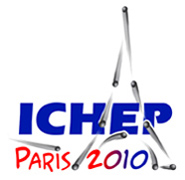Speaker
Andrew Laing
(University of Glasgow)
Description
The Neutrino Factory is the most powerful of the proposed facilities to search for CP violation in the lepton sector via neutrino oscillations. It delivers a well known beam of electron neutrinos and muon-antineutrinos from positive muon decay (electron-antineutrinos and muon neutrinos from negative muon decay) produced in the straight sections of the storage rings in which the muons are confined at an energy of 25 GeV. Studies carried out in the framework of the International Design Study for the Neutrino Factory (the IDS-NF) show that the sensitivity to the CP-violating phase, the mass hierarchy, and the last unknown mixing angle θ_{13} is maximised with far detectors able to detect with low background the sub-leading ν_e to ν_μ oscillations. The IDS-NF baseline configuration calls for two detectors, one situated between 2000 km and 5000 km and another at the magic baseline of around 7500 km. Several technologies are being discussed for these magnetised detectors: iron calorimeters; giant liquid argon TPCs; and totally active scintillating detectors. The IDS-NF baseline option – as a compromise between feasibility, cost, mass, and performance – is a 100 Kton magnetised iron sampling calorimeter at the intermediate baseline, similar to the existing MINOS detector but with 20 times more mass and improved performance, and a 50 Kton detector at the magic baseline. The other far-detector options, which have better granularity and offer both a lower energy threshold and an improved energy resolution, would complete the scientific return of the facility by detecting additional oscillation channels or unexpected effects and carry out a rich non-accelerator based neutrino programme. All options still require significant R&D. A near detector of much smaller mass for precise measurement of neutrino flux and neutrino cross-sections will be situated close to the end of the muon storage ring straight section(s). The various detector options will be discussed, covering the most important aspects: performance; technological challenges; as well as the R&D program and expected cost drivers.
Primary author
Prof.
Kenneth Long
(Imperial College London)




